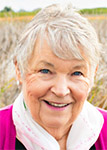“RPCVs discover cohousing” by Evelyn Kohl LaTorre (Peru)
What is it about Cohousing Communities that attract so many RPCVs to live in some of the 200 cohousing developments in the US? Scores of Returned Peace Corps Volunteers have joined this growing movement toward a friendly, community-oriented, democratic lifestyle? They gravitate to these purposeful neighborhoods designed for human interaction after having resided for two years in developing countries.
Mission Peak Village cohousing
For example, one-third of the current members of Mission Peak Village Cohousing (MPV) in Fremont, California (missionpeakcohousing.org) are RPCVs who joined other like-minded people and purchased 1.25 acres in the suburban setting, 25 miles south of San Francisco. They are designing the kind of supportive neighborhood of singles, families, and elders where they hope to live for the rest of their lives.
“I didn’t understand what the word “community” meant until I was assigned to a village on a small island,” says Maria, who was in the Peace Corps in the Eastern Caribbean from 1998-2000.
“I had a difficult time finding anything close to that upon returning to the U.S. And now that I have children, I don’t want them to grow up with a naive sense of the world like I did. That is why I am in cohousing”
Features of cohousing
Cohousing communities are arranged to encourage frequent interactions and the formation of close relationships among members. Neighbors cooperate within the community caring for one another — much like the communities RPCVs have found in the countries where they served. By doing so, cohousing reduces social isolation, and improves mental health. It encourages physical activity and healthy eating habits.
“The intention is for people to come together and share resources rather than pull into the garage and close the doors, never interacting with your neighbors,” says Shawn Mulligan, who lives at Stone Curves cohousing in Tucson, Arizona.
Mission Peak Village will have 32 units and will feature a large common dining room where those who wish can share common meals several times a week. Some of the dinner ingredients will be from the community garden and fruit trees in the10,000 square feet of open space.
While cohousing developments are designed to encourage community, residents maintain as much personal privacy as they want. Individuals can choose how much they engage to find the right balance between their privacy and the community. Decision making in cohousing communities is often based on forming a consensus within the community.
“I loved the way our neighbors in our small town in the Peruvian Andes cared about us volunteers and each another,” says Evelyn, who returned from her Peace Corps assignment in 1966, married to a Peruvian. “Volunteers were always being invited into homes for a meal. And we made chocolate chip cookies and apple pies for our neighbors.” Now retired, Evelyn and her husband are helping to recreate that same caring sentiment among the multi-generational, multi-ethnic members of Mission Peak Village.
Sustainability
Cohousing in general, and MPV, in particular, is dedicated to sustainability. Mission Peak Village features all electric appliances, solar energy, sharing of electric cars, is near public transportation, and will have plenty of bicycle storage area.
Donna, another Mission Peak Village member who was in the Peace Corps in Costa Rica in 1973 says, “Peace Corps and cohousers have the similar values of a “village” mentality rather than a “tribal” mentality. Both RPCVs and cohousers advocate for social justice and the common good. “I like being part of both groups.”
Learn more
Living for two or more years in developing countries sensitizes Peace Corps volunteers to an authentic, less materialistic way of being. Cohousers also tend to have those same values. Find out more about this rapidly spreading movement at cohousing.org or call Kelli @ 510-413-8446.
• • •

Evelyn Kohl LaTorre (Perú 1964-66)
Evelyn Kohl LaTorre, served in the Perú, 1964-66 in Abancay, east of Cusco. She worked in the local hospital, started 4-H clubs, and taught P.E. in poor schools. Evelyn retired from 32 years in education and lives in Fremont, California with her Peruvian husband of 52 years.
The couple plan to live in Fremont’s first cohousing project. Evelyn loves traveling and writing about her adventures. Her memoir about falling in love in the Peace Corps, Between Inca Walls, A Peace Corps Memoir was given the 2021 Peace Corps Writers’ Moritz Thomsen Peace Corps Experience Award. Her second memoir, Love in Any Language, A Memoir of a Cross-Cultural Marriage, describes the challenges she and her Peruvian husband faced settling in the US.
I also was drawn to cohousing as i learned of its existence in late 1990s. While my daughter was in graduate school at UC Davis in Sacramento, she told me about the first one in the country after its concept was brought back from Europe and built in Sacramento.
I was drawn to a group who had just purchased 14 acres in Paso Robles in the central coast of California. Oak Creek Commons will be celebrating its 20th anniversary this year. It and my Peace Corps (1962 to 1964 adventure have been life changing even now in my 80’s.
Thanks for helping me see the connection!!!
Thanks for helping prove my observation that Cohousing is meant for Returned Peace Corps Volunteers. I visited the Paso Robles site before any building had taken place. Glad to know of yet another RPCV happy in cohousing.
Thank you, Evelyn La Torre, for reaching out to RPCVs. Your article explains very compellingly how Peace Corps values and experiences connect with cohousing! How great if Cohousing “takes a village” or RPCVs!
Thanks Tina for your words of wisdom. How great if we could fill Mission Peak Village with Returned Peace Corps Volunteers. You are so right in saying that the values of the two groups match so closely.